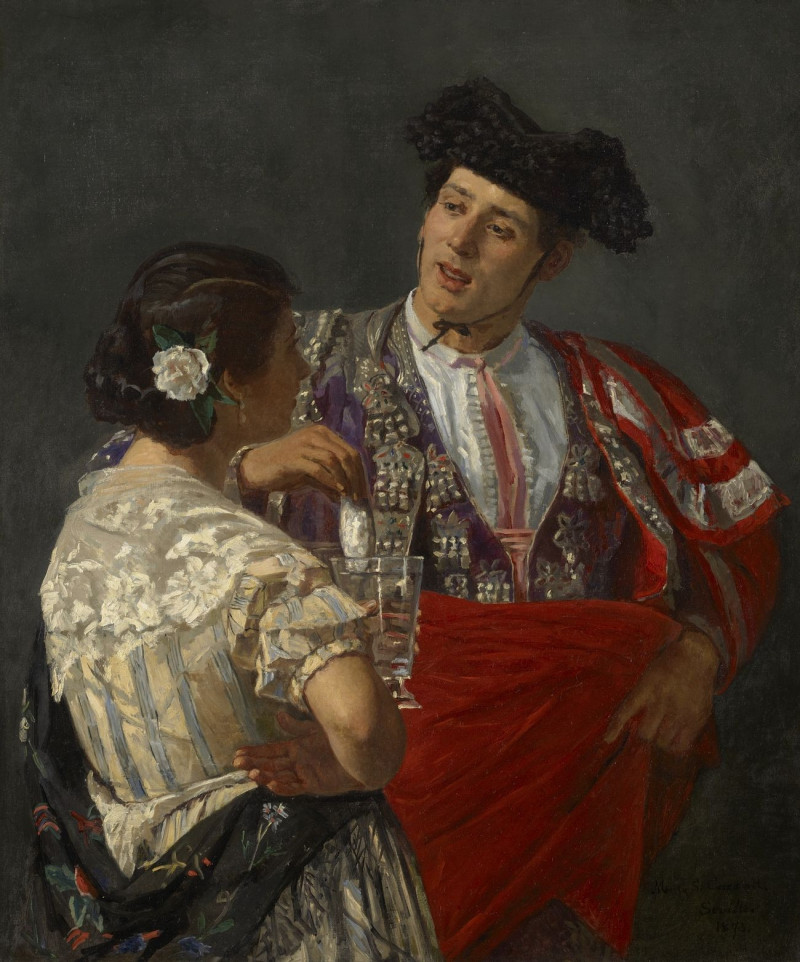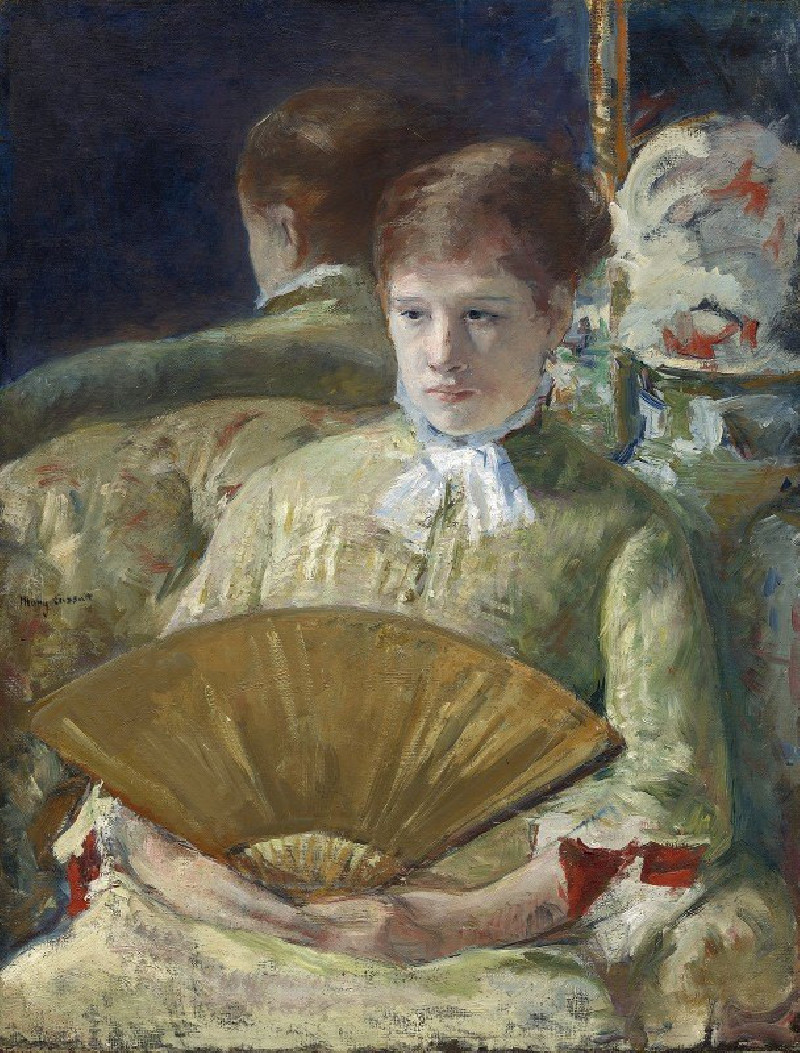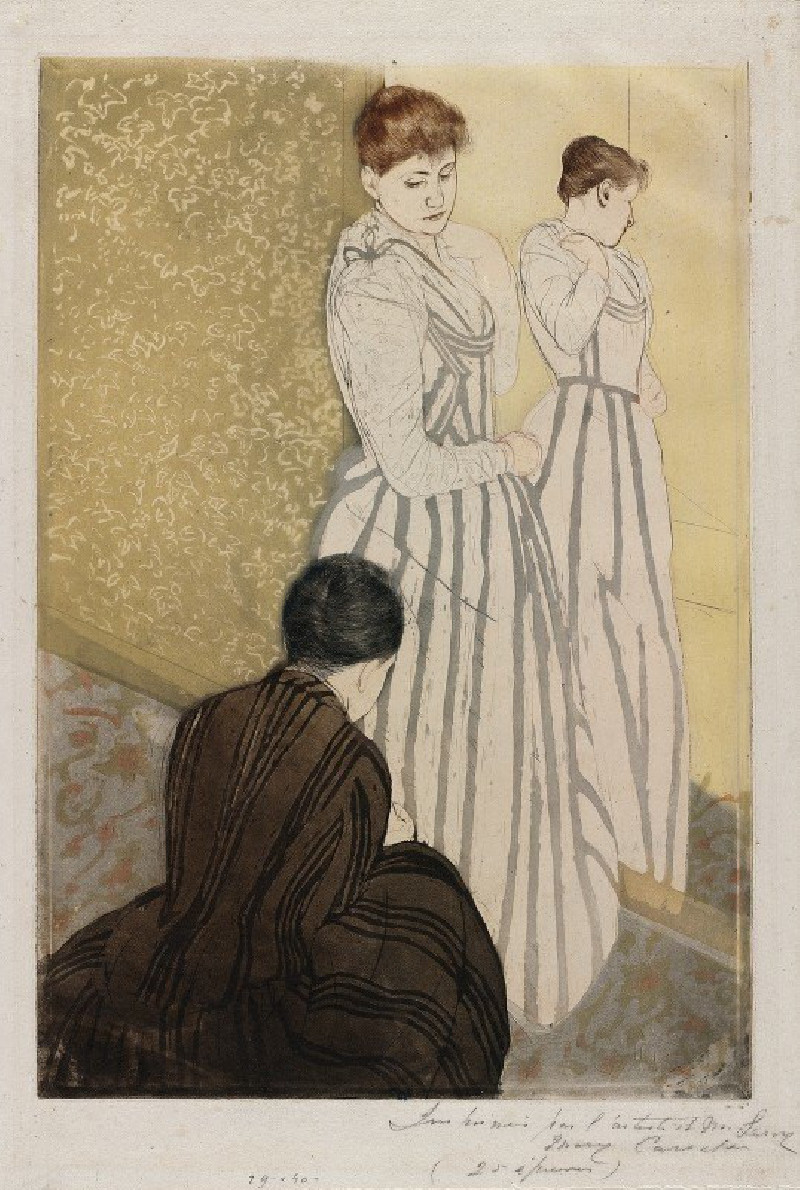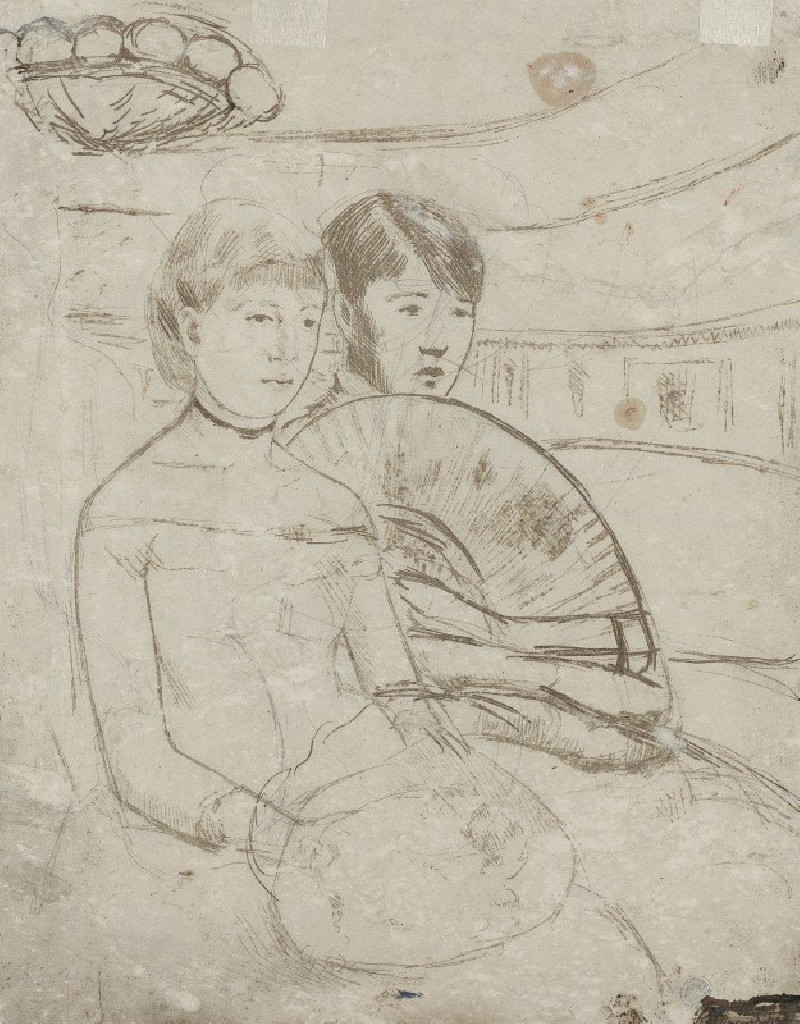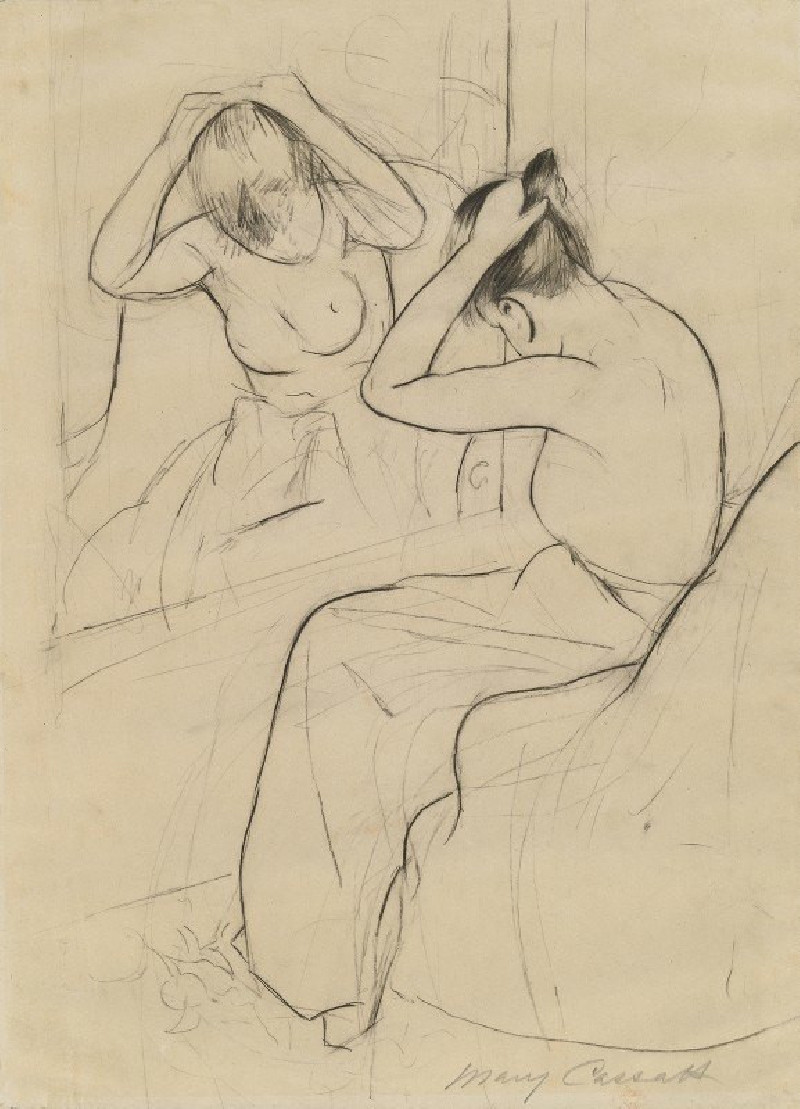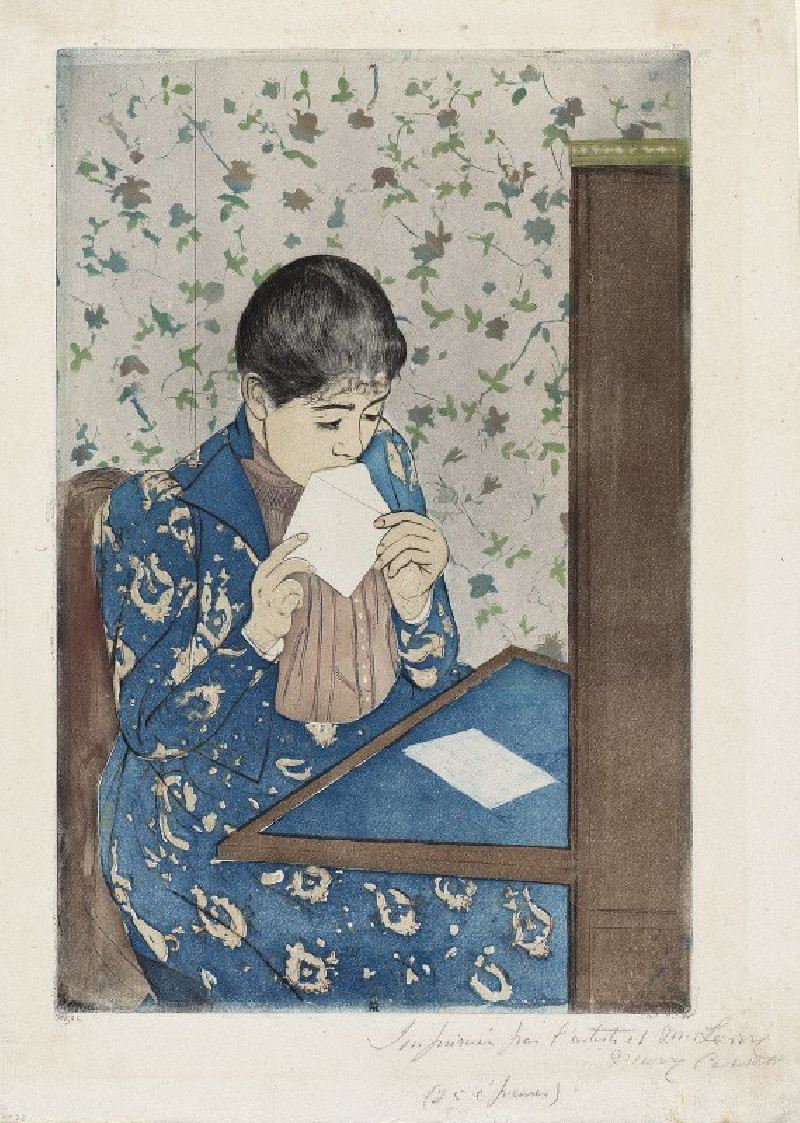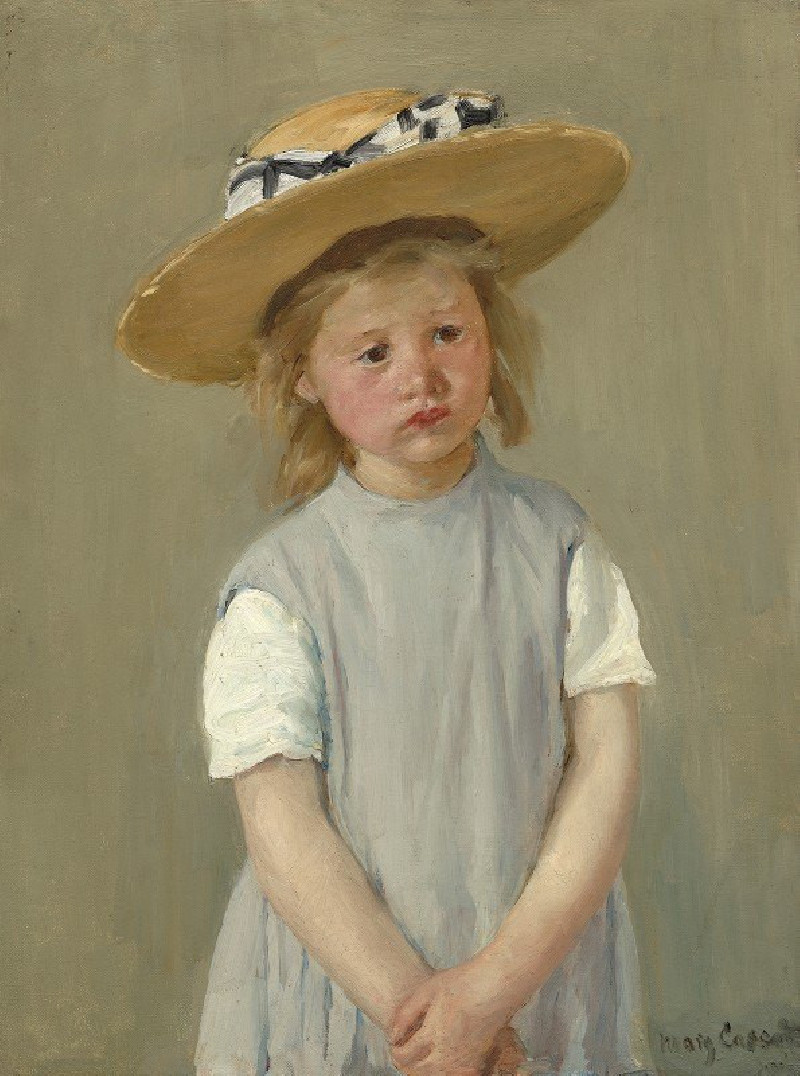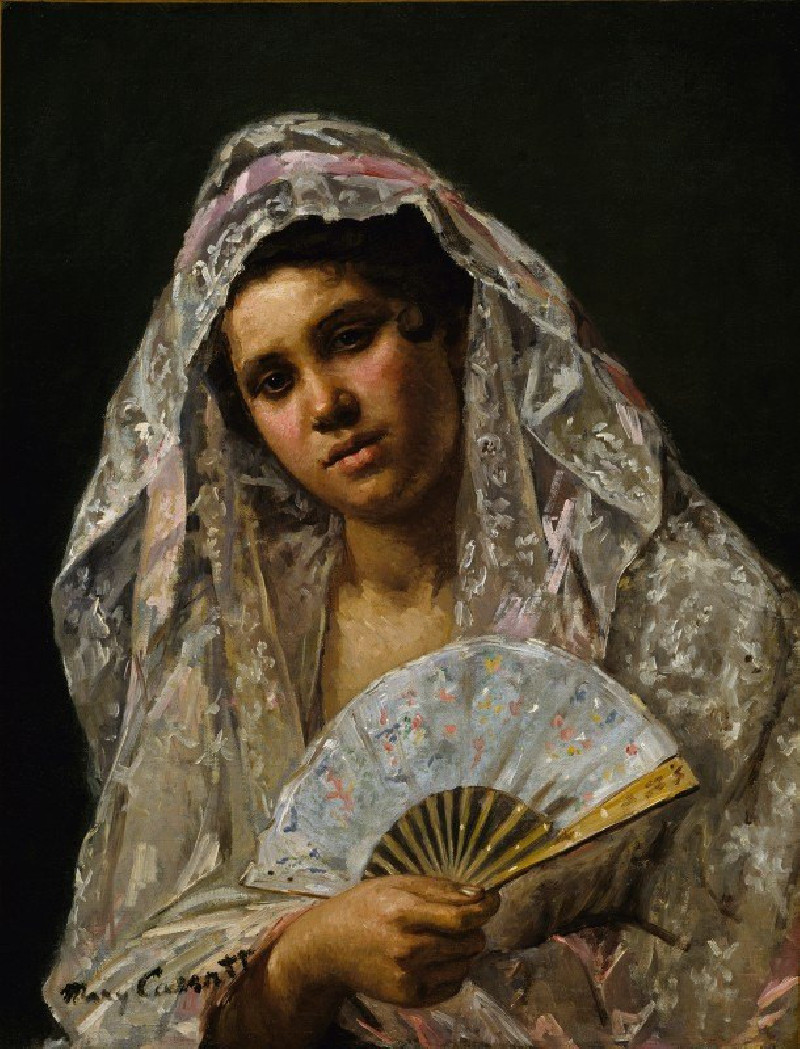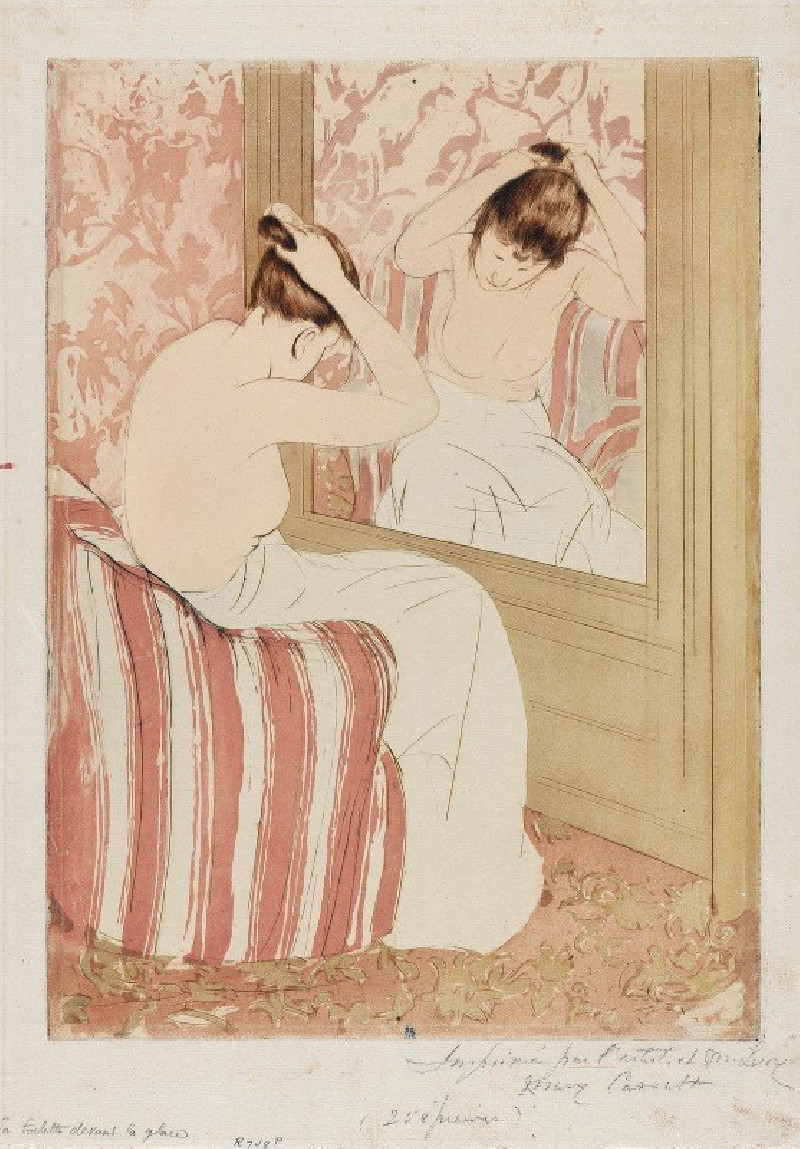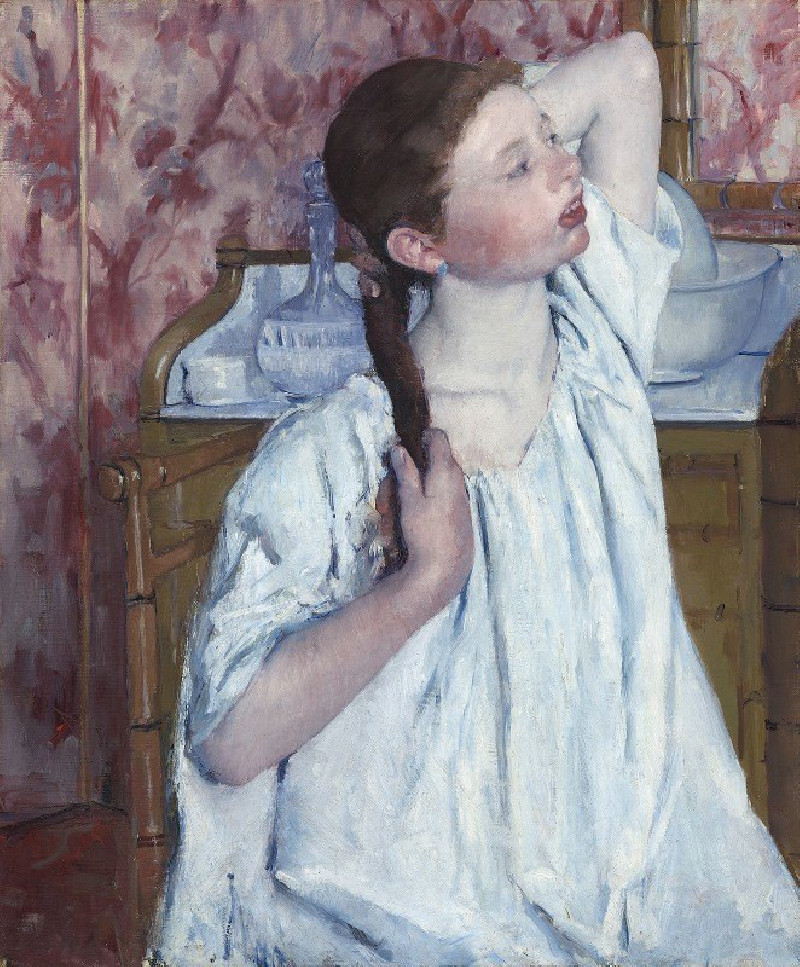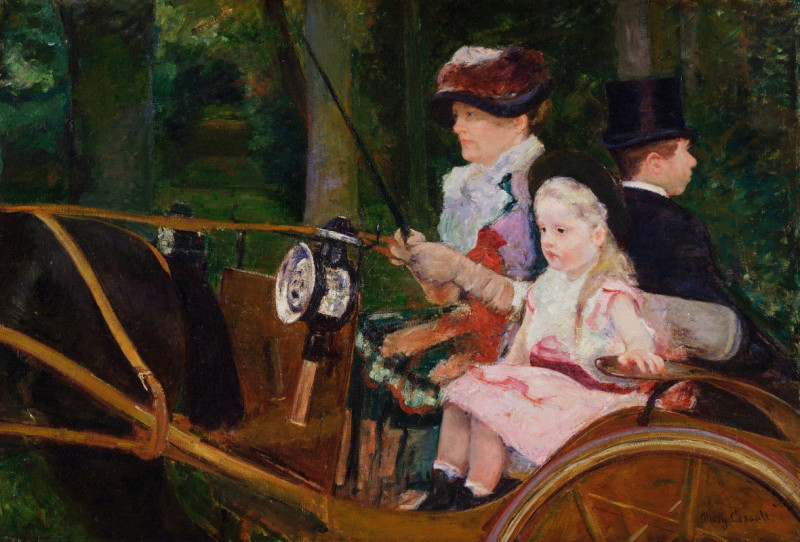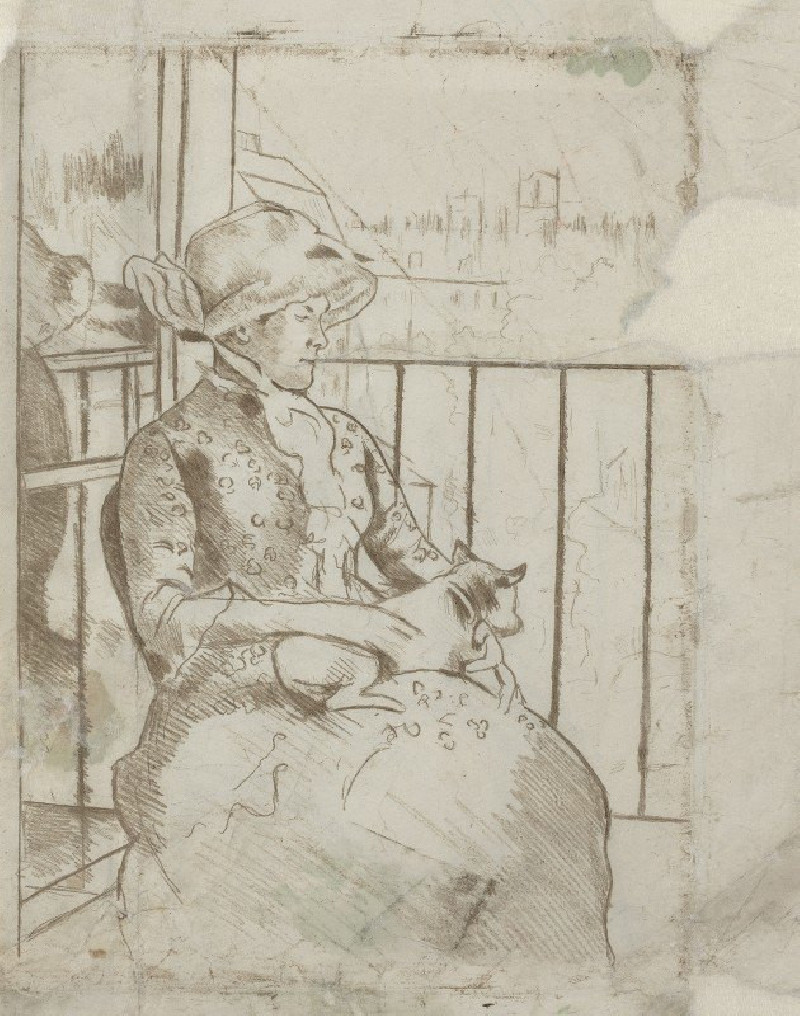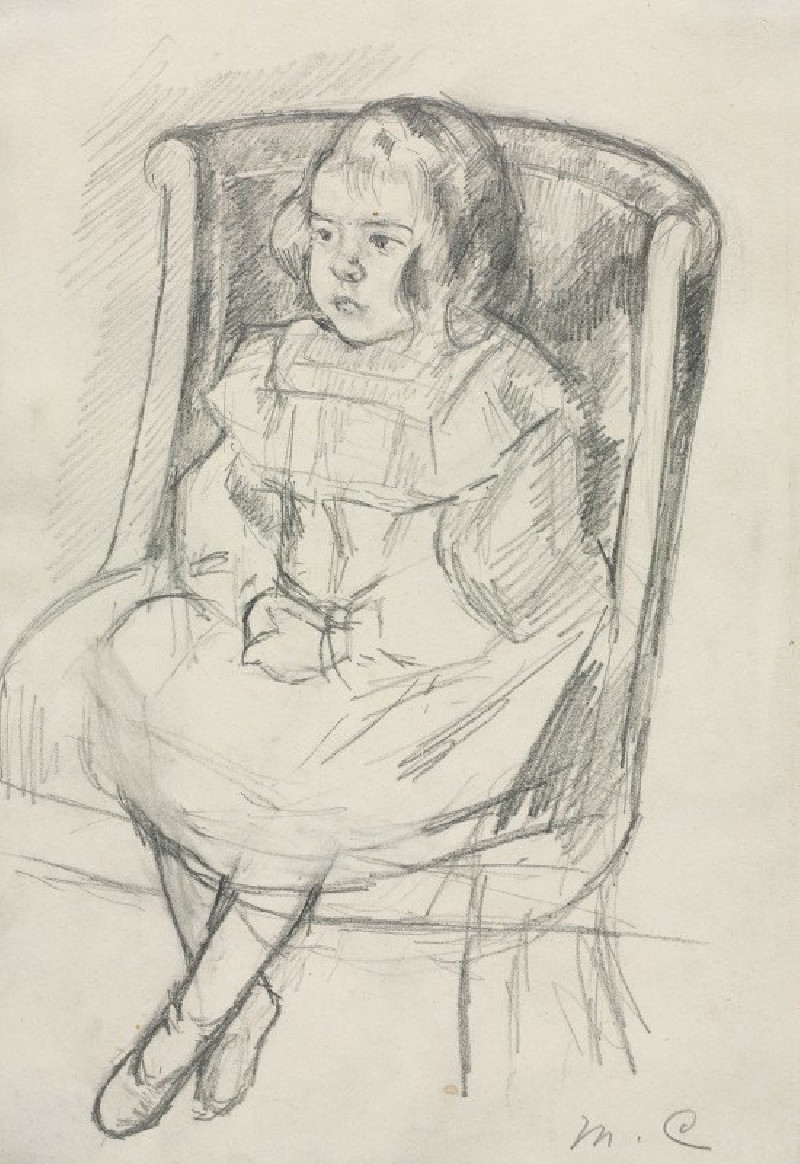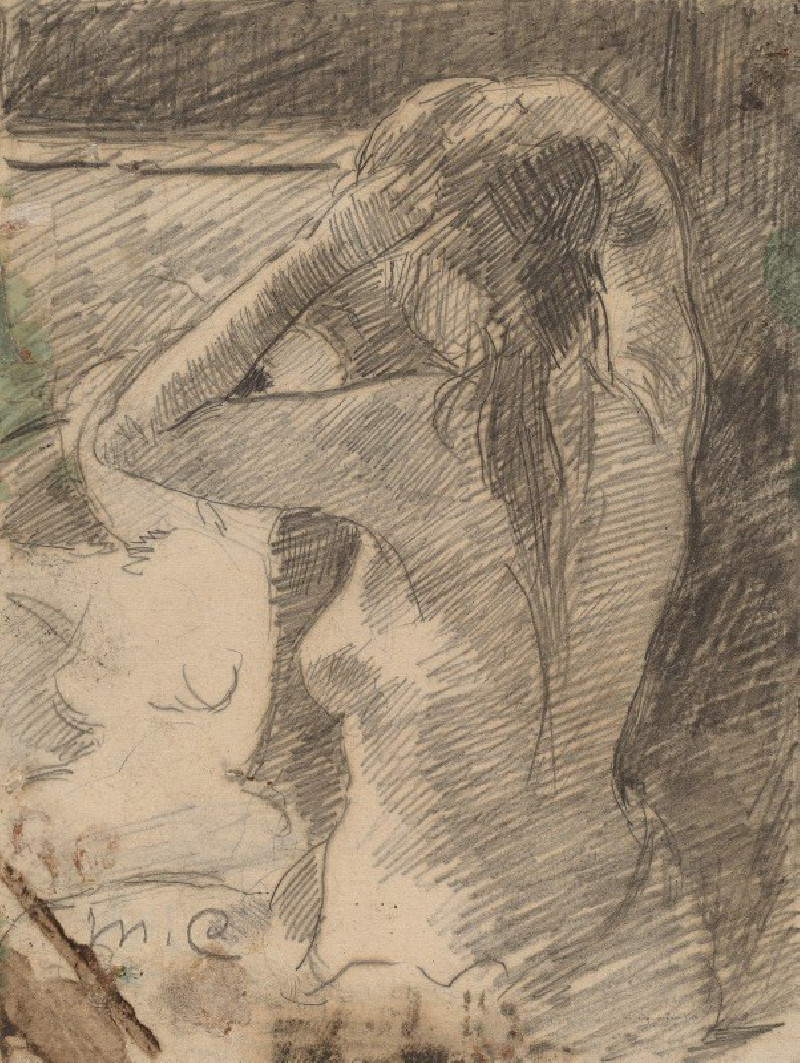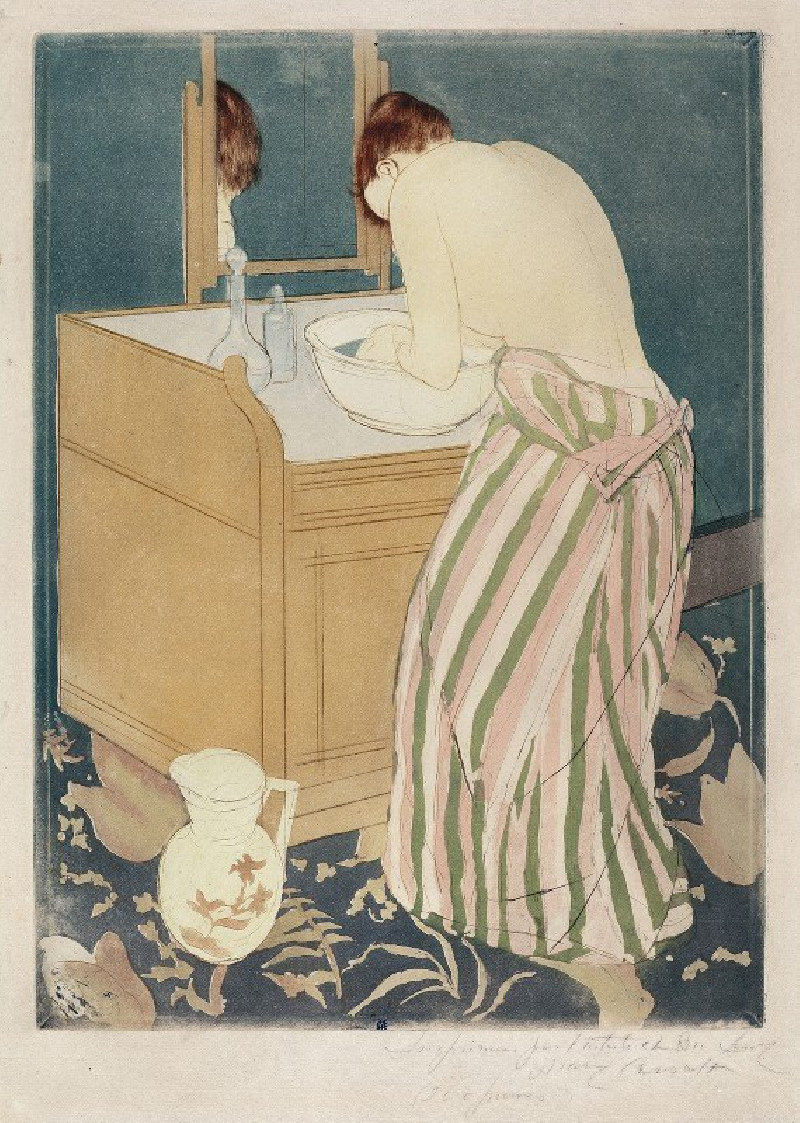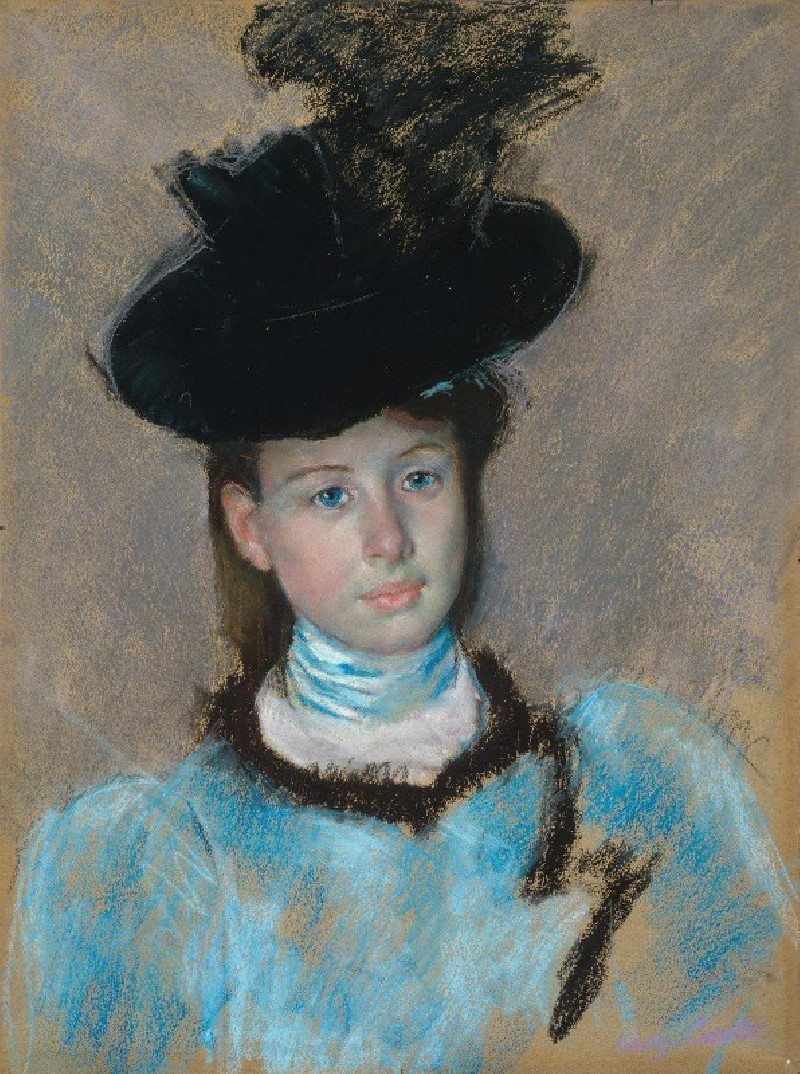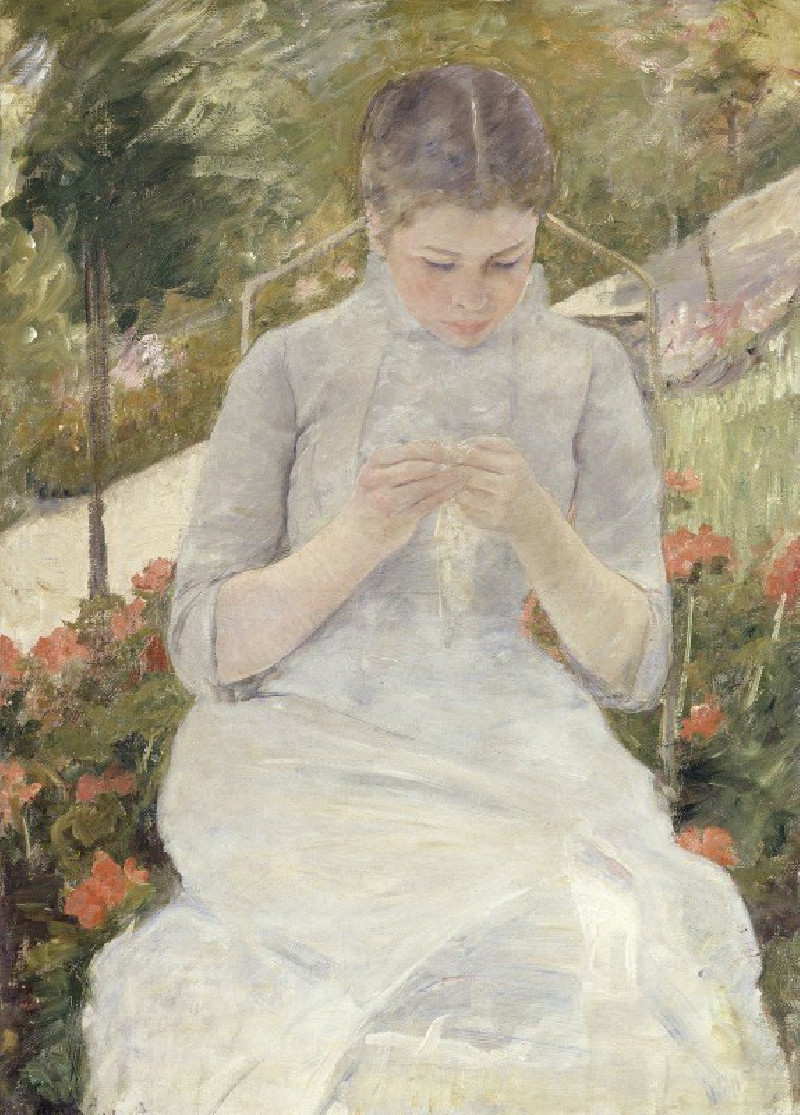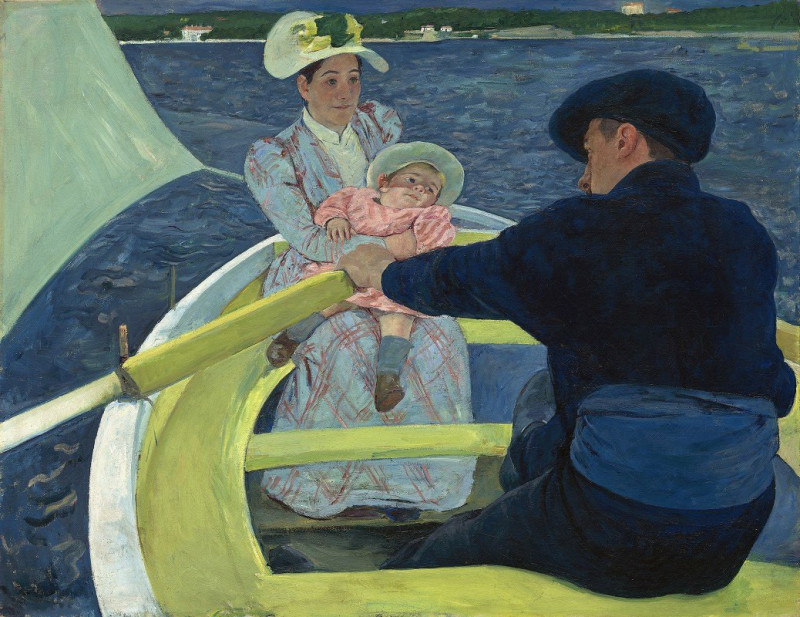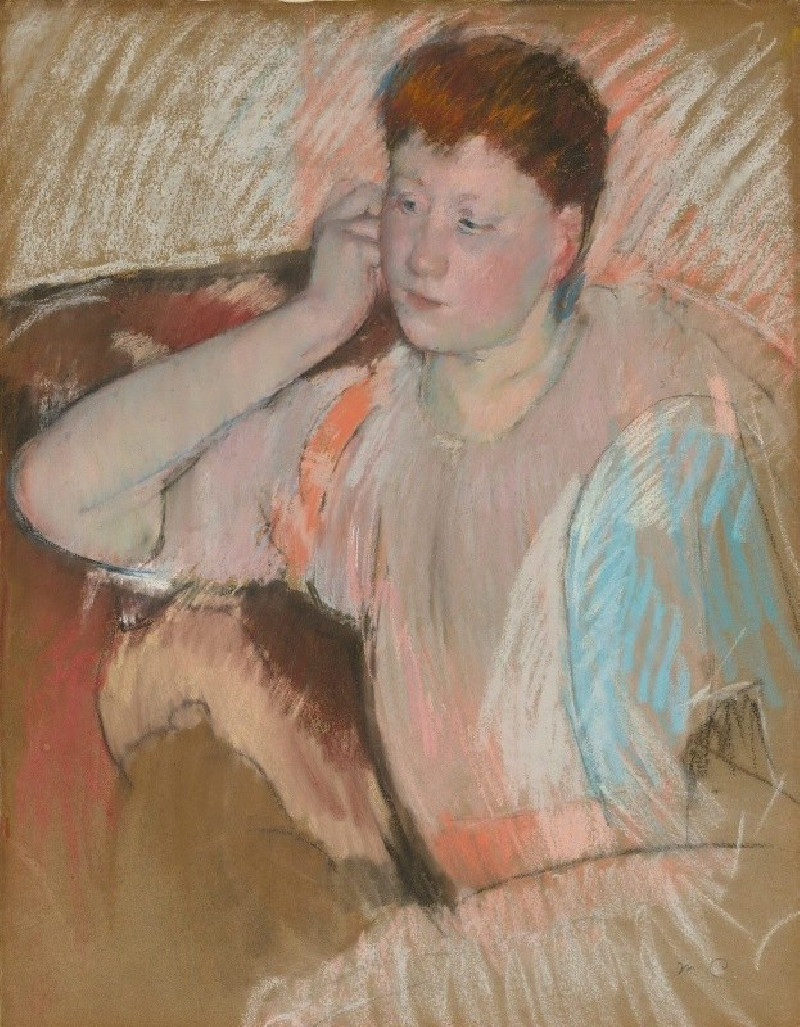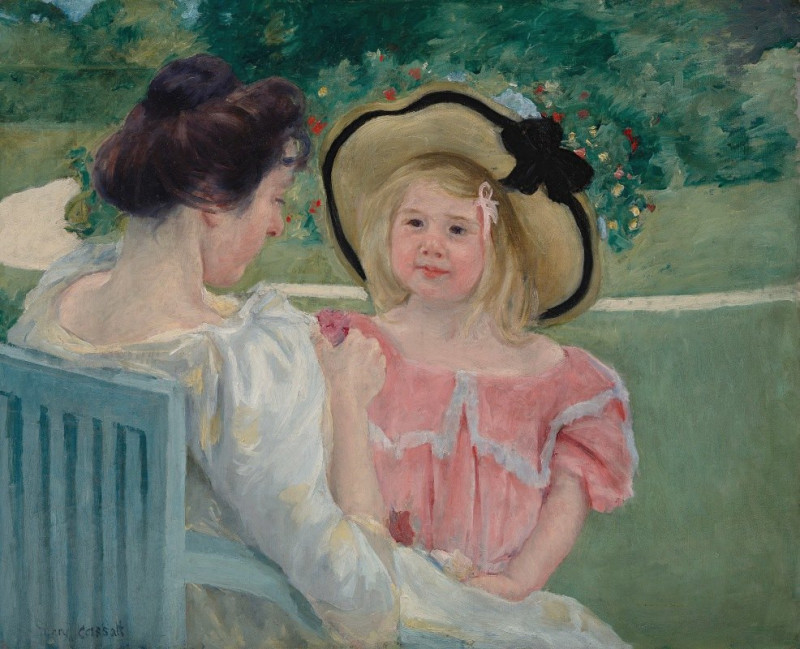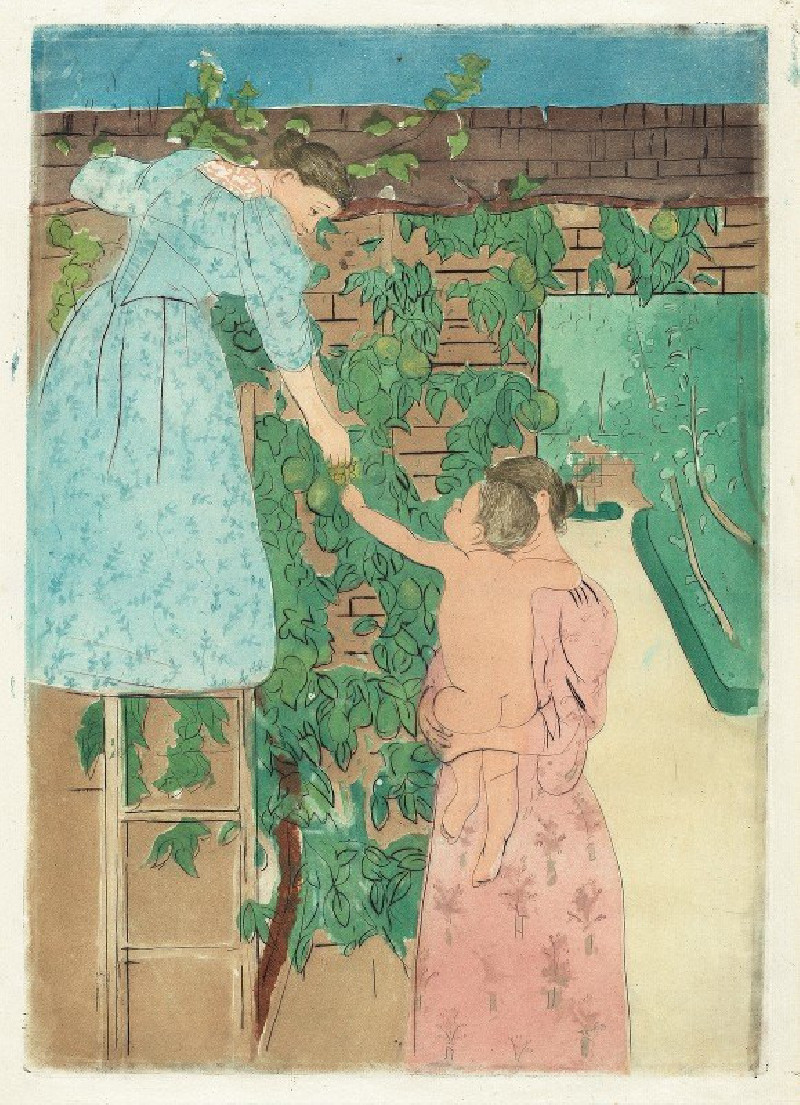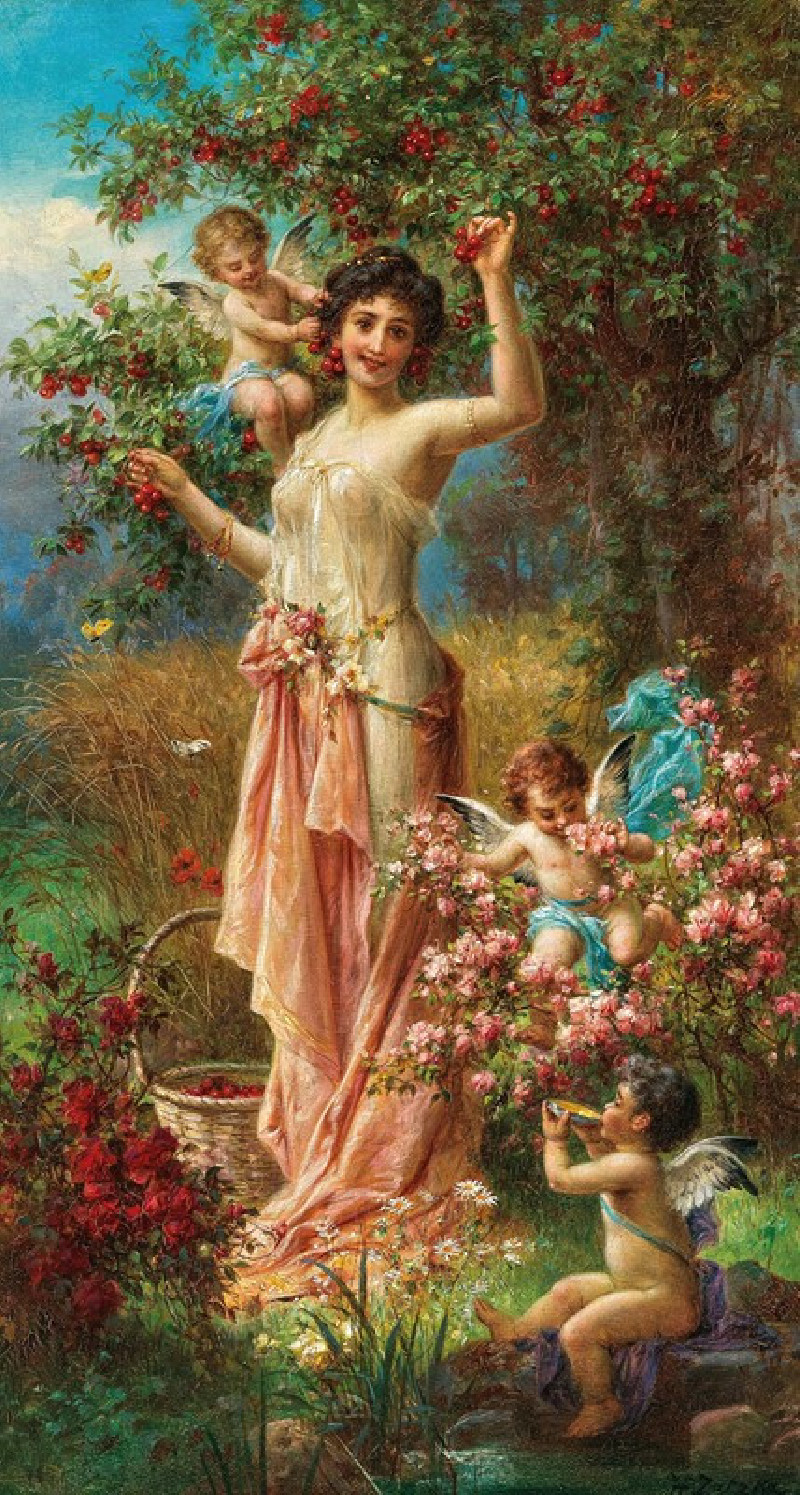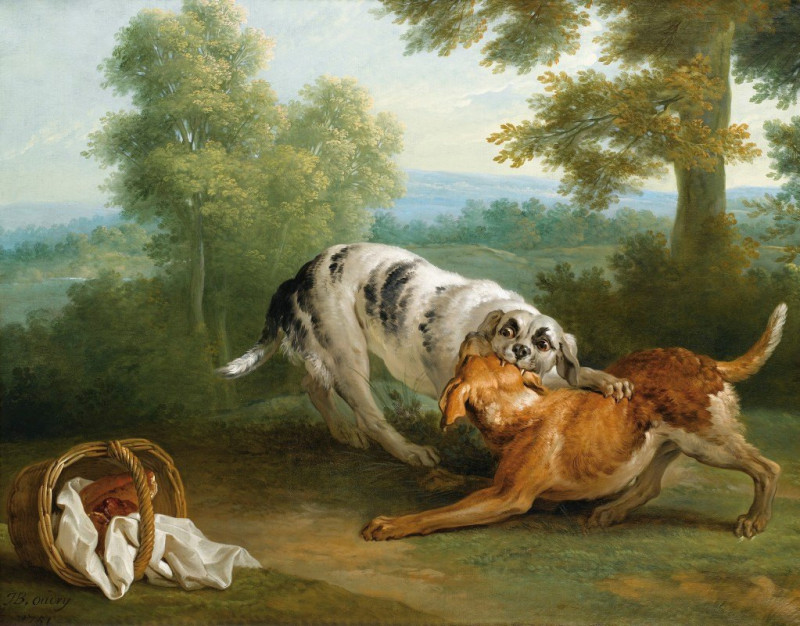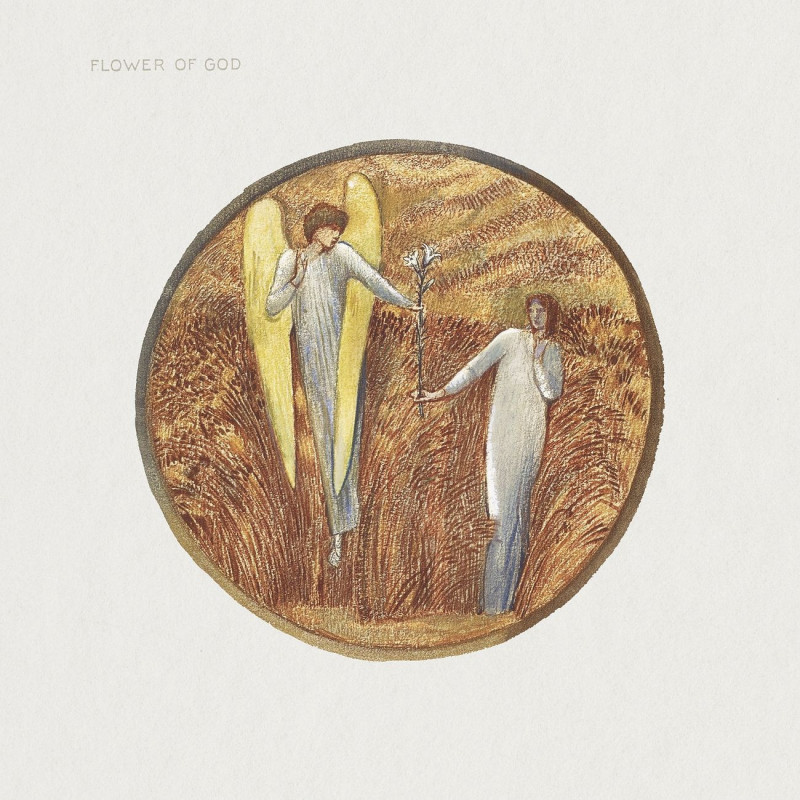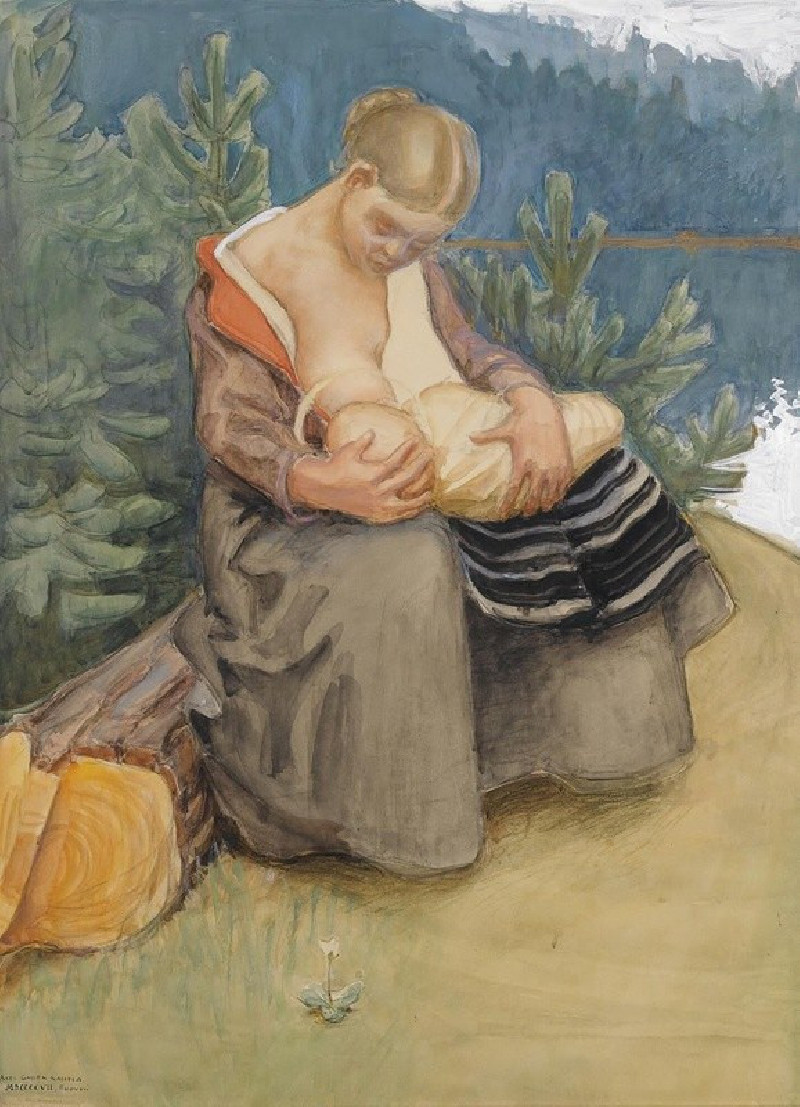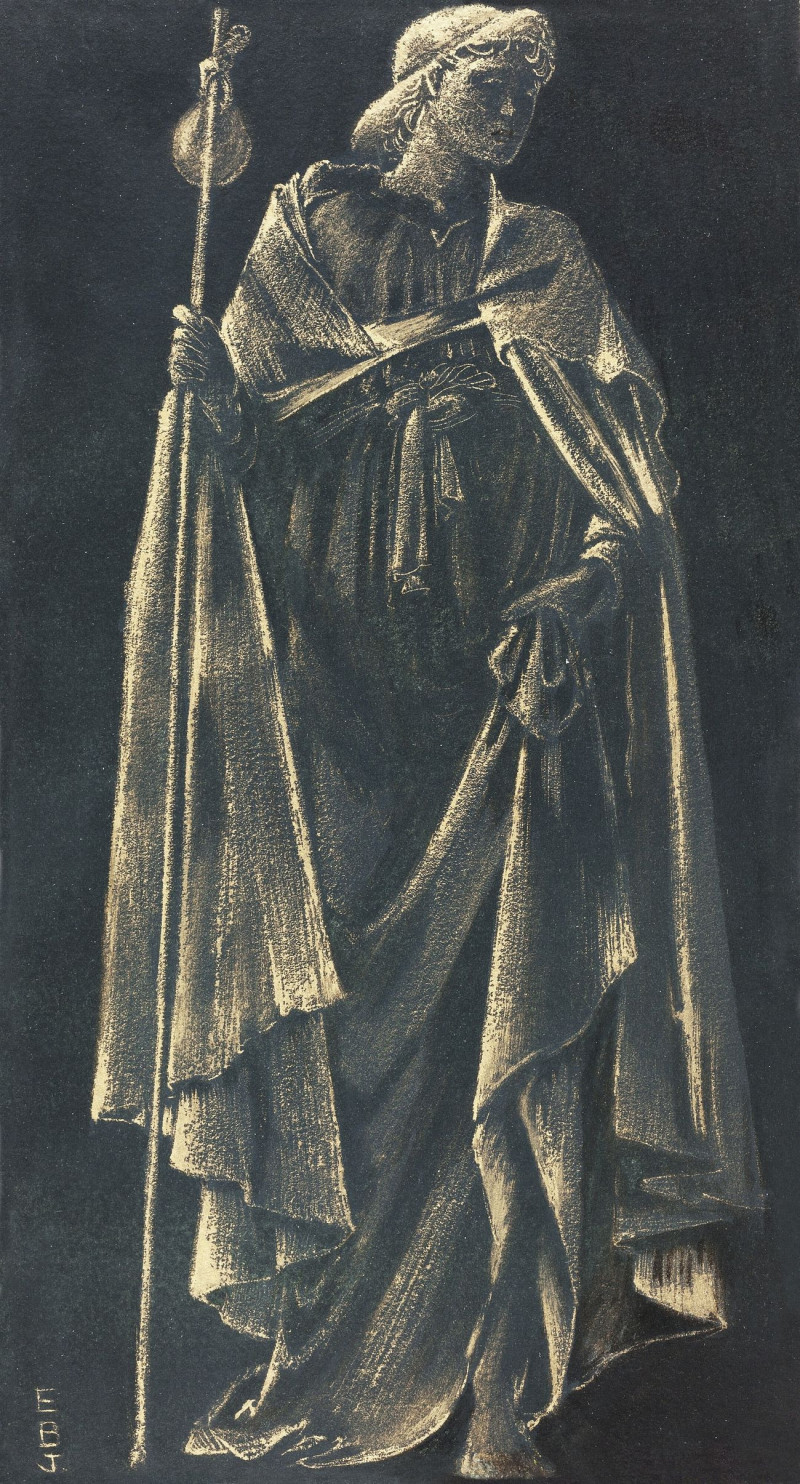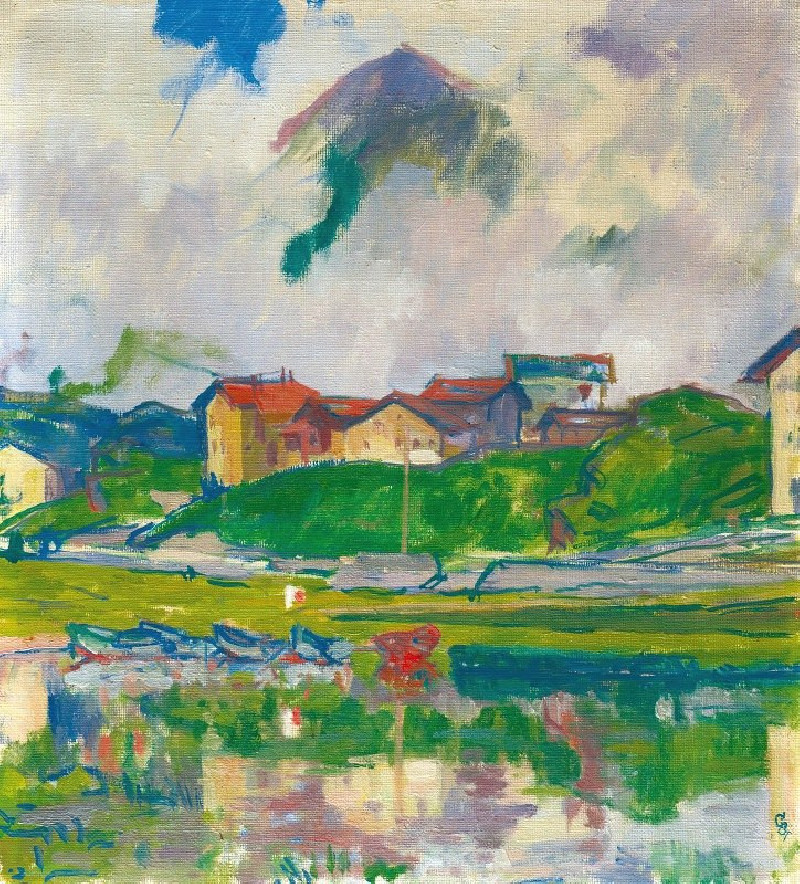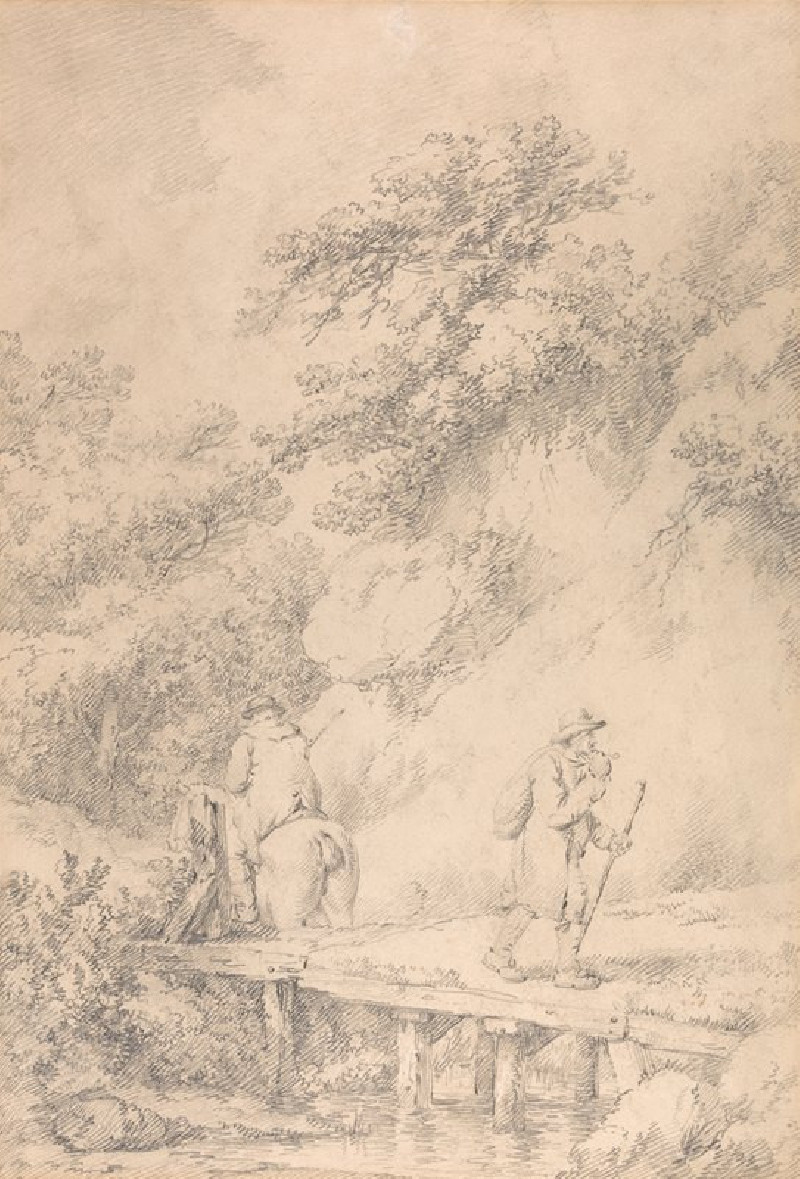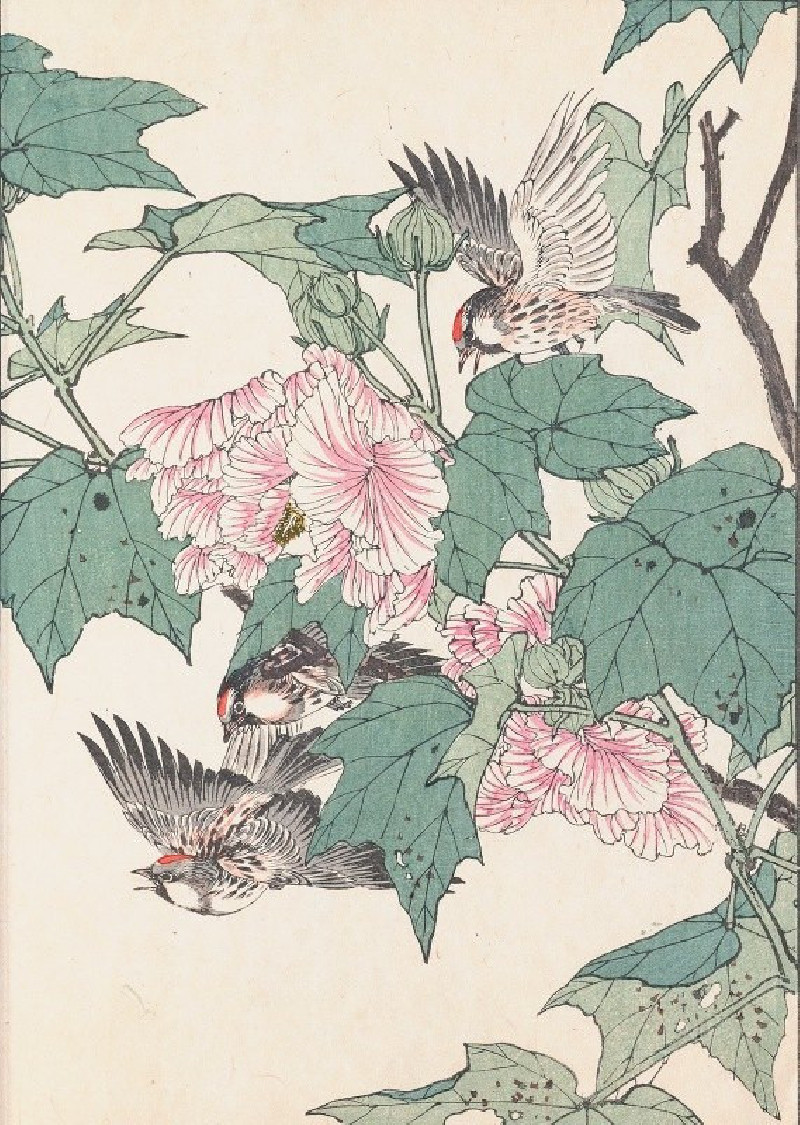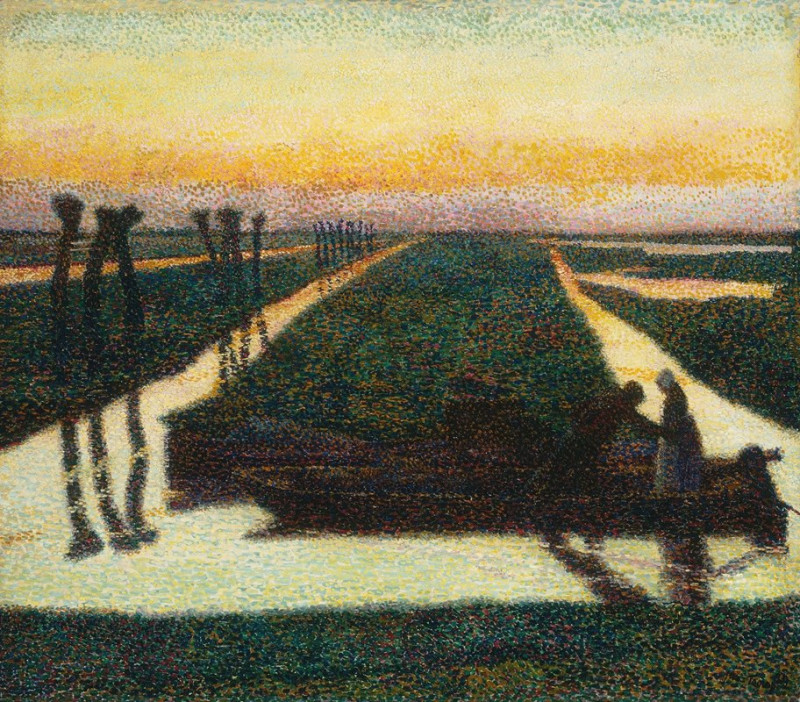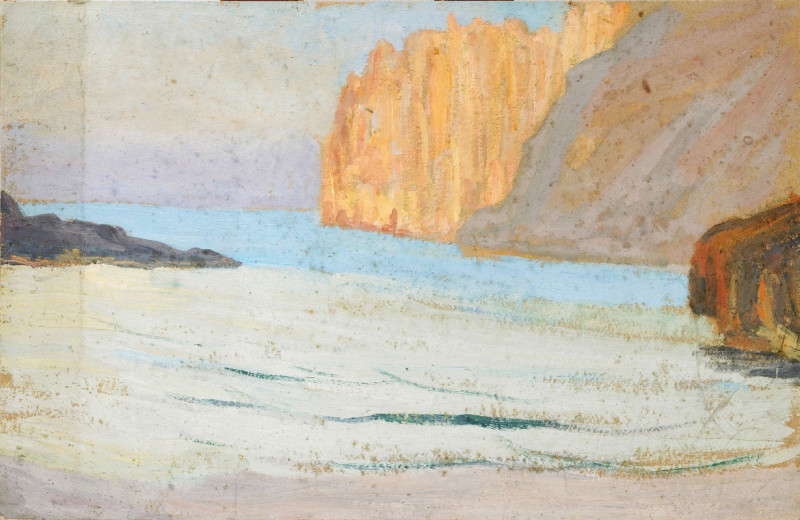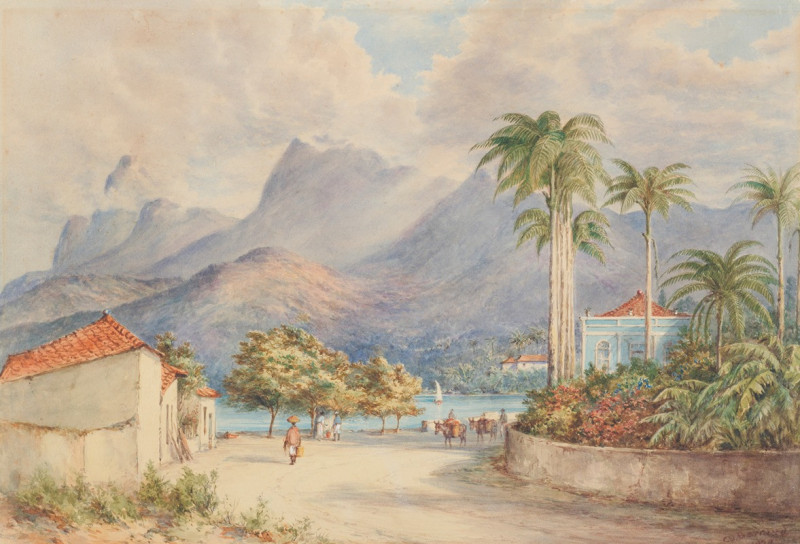Offering The Panal To The Bullfighter
Technique: Giclée quality print
Recommended by our customers
More about this artwork
"Offering The Panal To The Bullfighter" is an evocative painting by Mary Cassatt, capturing a vivid, intimate scene that hints at cultural spectacle and personal interaction. The artwork portrays a moment between a bullfighter and a woman in traditional Spanish attire.The bullfighter is dressed in a heavily embellished costume known as a "traje de luces", which translates to "suit of lights" due to its sparkling decorations. His attire features a lavish design with intricate embroidery and is complemented by a vibrant red cape, essential in the bullfighting ring. His head is adorned with a traditional black "montera", a bullfighter's hat.The woman, who appears more subtly attired in a beautiful white blouse decorated with floral patterns and a dark skirt, offers the bullfighter a drink from a glass. Her expression is calm and attentive, focused on the bullfighter, and her posture leans toward him in an offering gesture. She also wears a floral accessory in her hair, enhancing her traditional appearance.The setting is simple and emphasizes the figures, with a dark, neutral background that draws attention to the facial expressions and the costumes' brilliant colors. The interaction suggests a moment of respite and perhaps camaraderie, reflecting a scene possibly after a bullfight where emotions and adrenaline still linger.Mary Cassatt, though American, was greatly influenced by her residence in Europe, and this painting likely reflects her observations and appreciation of European, particularly Spanish, customs and traditional events.
Delivery
Returns
Mary Stevenson Cassatt was an American painter and printmaker. She was born in Allegheny City, Pennsylvania (now part of Pittsburgh’s North Side), but lived much of her adult life in France where she befriended Edgar Degas and exhibited with the Impressionists. Cassatt often created images of the social and private lives of women, with particular emphasis on the intimate bonds between mothers and children.
She was described by Gustave Geffroy as one of "les trois grandes dames" (the three great ladies) of Impressionism alongside Marie Bracquemond and Berthe Morisot.In 1879, Diego Martelli compared her to Degas, as they both sought to depict movement, light, and design in the most modern sense.

